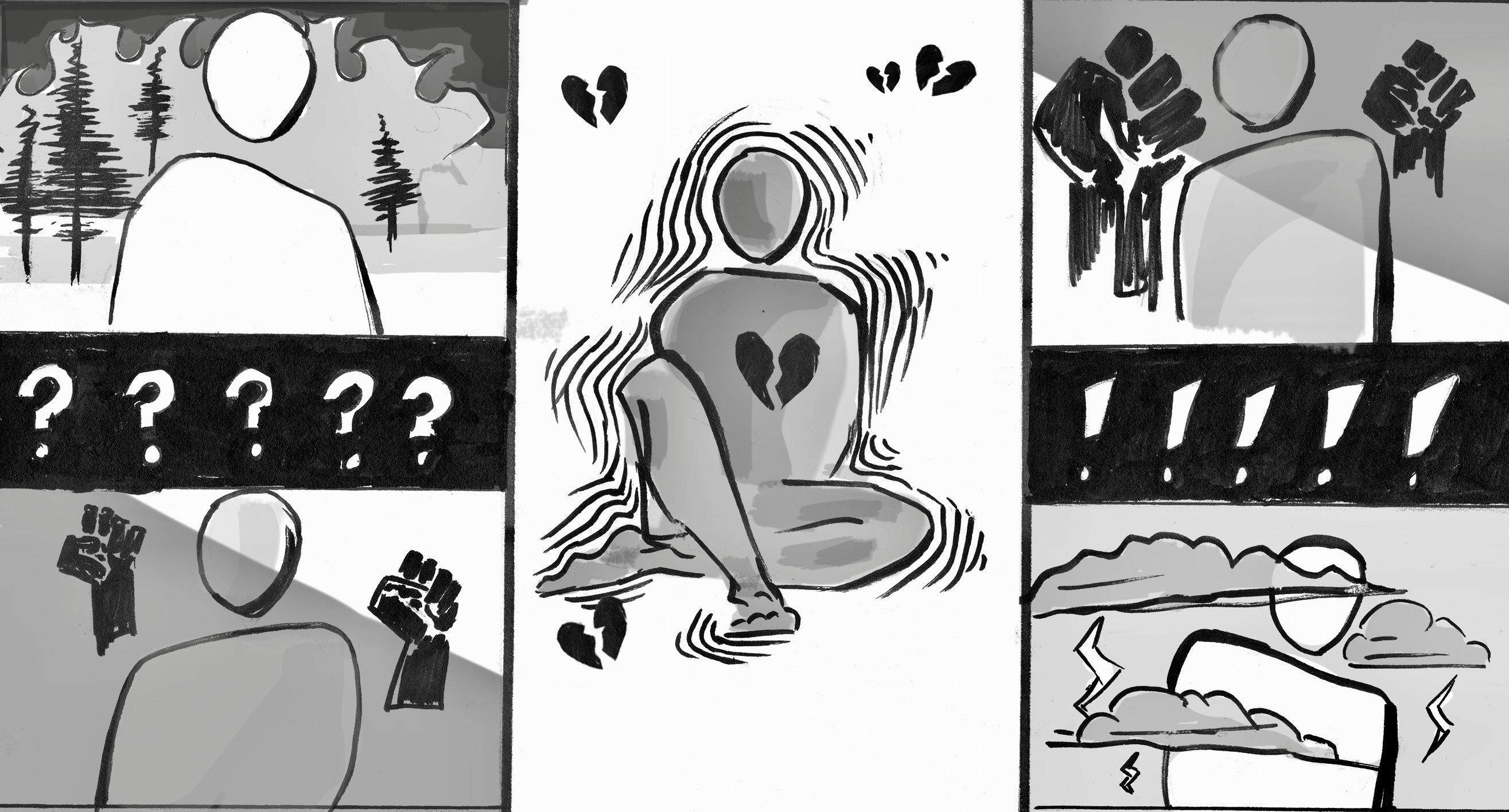
In the wake of a major current event, it can be hard for students to set aside their reactions to what is happening when they show up to class. Without a doubt, 2020 has thrown countless curveballs in terms of current events, and it is now more important than ever for teachers to address and discuss recent issues in the classroom. Despite the unforeseen challenge of online learning, many teachers are still making a significant effort to create space for these conversations.
For some Berkeley High School (BHS) teachers, a discussion of current events is already built into the curriculum. They recognize that it is crucial for students to understand connections between class material and the real world.
Last year, Melissa Jimenez, an English teacher in Berkeley International High School (BIHS), taught Woman at Point Zero by the Arab author Nawal El Saadawi, a novel about dismantling the patriarchy. As the class studied the novel, the bathroom graffiti incident occurred at BHS, where the names of rapists and other “boys to watch out 4” were written in marker on bathroom stall doors. The event sparked conversations across campus about sexual harassment and the administration’s failure to adequately address it.
Jimenez drew connections between the content of the book and the incident. “I kept pushing the issue, saying, ‘Let’s not read this and assume dismantling the patriarchy is something that only needs to happen in the Arab world. Let’s look at our own school and find passages in here that speak to us,’ ” said Jimenez. “I didn’t want them to shut out the text and think it’s somebody else’s problem, because it’s our problem too,” she explained.
However, current events do not always line up perfectly with the curriculum. Teachers do their best to prepare discussions in order to prevent conflicts in classrooms. When talking about topics that affect some students more than others, such as racism or sexual harassment, creating the right environment is both paramount and incredibly difficult.
Jimenez uses a class structure involving monthly community circles, where all students are required to participate. They can choose to answer one of two prompts, the first being more superficial and the second granting the option to dig deeper into the given topic. “As a teacher, if you just ask for volunteers, it’s just gonna be the same voices,” said Jimenez. This practice makes conversations more inclusive, inviting diverse and unheard voices to the table. Jimenez explained that this was even more true for students of color in predominantly white spaces. She explained, “It’s harder to speak up if you feel like you’ll be judged or you’re representing your race. It’s my job to counter that and make sure everybody’s voice is heard.”
It is also essential to take student experiences and feelings into account when discussing current events and issues. Otherwise, the conversation may unfairly burden or trigger certain people. As a result, students must learn to approach these conversations with empathy.
Zakiya Zazaboi, a Universal Ninth Grade (U9) Ethnic Studies teacher, said, “I have 14 to 15 year olds [in my class] that are learning how to engage and be intellectual, but may not know how to talk about grief in the way black students are going through. It’s very personal for the students that are being directly affected by this because of who they are, while it’s an intellectual thing for others.”
Teachers bear a hefty responsibility in bringing current events into the classroom. Oftentimes, the positionality of the teacher can be critical in the conversation. “POC and Black teachers can say what they can because it’s their history, but white teachers need to come off less like they know everything about the subject,” said Riya Jivan, a BIHS junior. They explained, “It makes it seem like there’s a right and wrong in what you say, or like there’s one way to feel about the situation. It should be more open-ended.”
However, teachers of color point out that conversations involving race are no less challenging to navigate for them. Zazaboi, a Black teacher, said, “The hard thing for me is that I’m personally affected by this too. I’m not ready to cry or open up my heart to my mixed population of students and get feedback or testimonies I’m not prepared for. There’s no telling what will happen when we start talking about these subjects, so I gotta protect my heart.”
Teachers cannot be expected to be emotionally distanced from today’s issues, a privilege many white teachers do have. Jimenez discussed her role as a teacher in having discussions about current issues. “My silence as a white woman sends a message that I either condone the injustices that have transpired, or that I don’t care about my students. Silence matters, and it’s the worst thing I can do,” she said. While it is important for all teachers to address current events and issues, it is crucial that those who are less personally impacted use their privilege to help their students.
Current events play an important role in the classroom, as these charged conversations greatly benefit both teachers and students. While many issues can be intense, they are undoubtedly worth having discussions about. Zazaboi reflected, “I really value my career and future at BHS because of these super uncomfortable conversations we get to hold not only with each other, but with students who can tell us we need to do better and be better. I don’t think that happens everywhere.”
"current" - Google News
September 16, 2020 at 12:46PM
https://ift.tt/3c2ekCR
The Role of Current Events in the Classroom - berkeleyhighjacket.com
"current" - Google News
https://ift.tt/3b2HZto
https://ift.tt/3c3RoCk
Bagikan Berita Ini














0 Response to "The Role of Current Events in the Classroom - berkeleyhighjacket.com"
Post a Comment